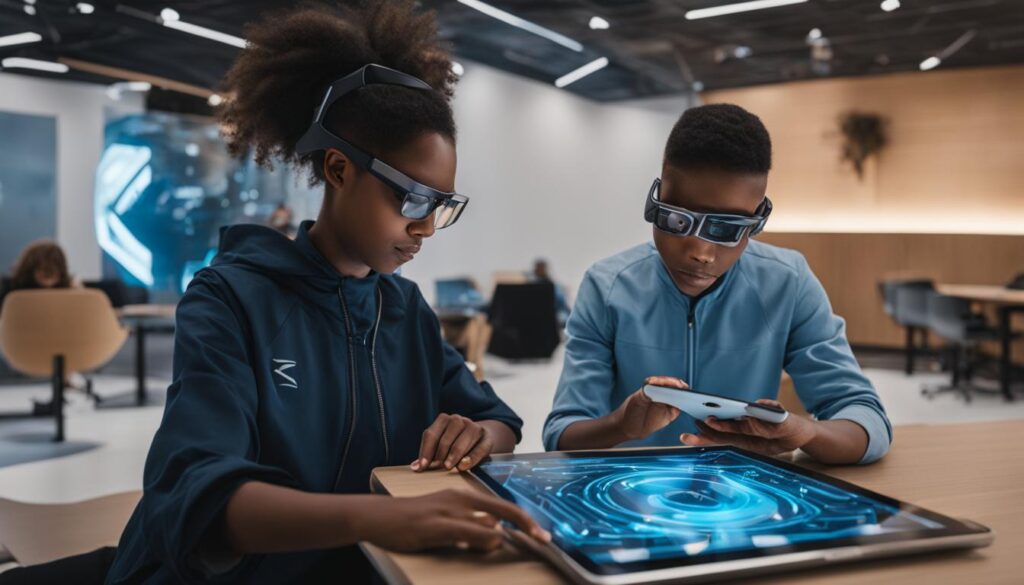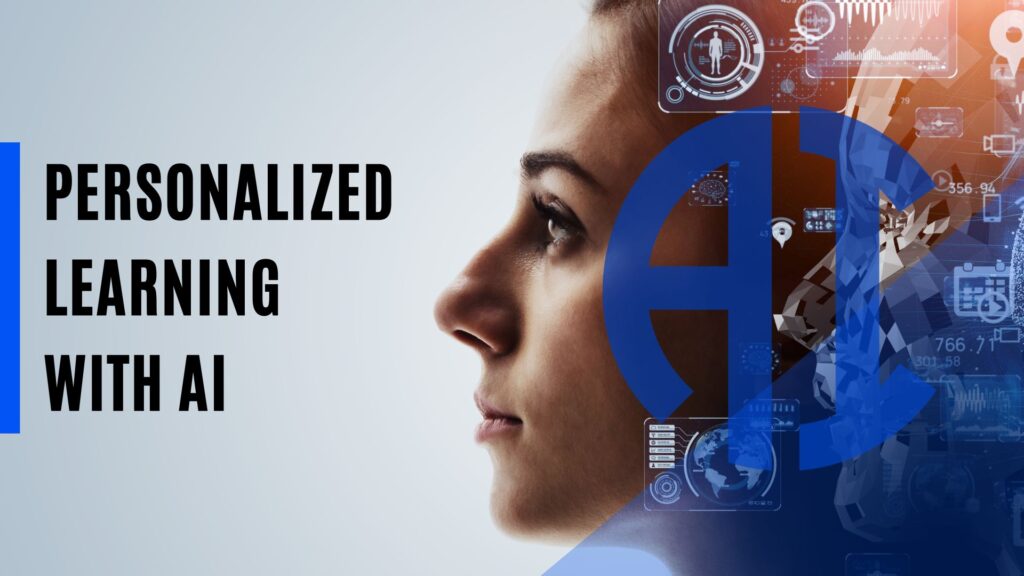Are traditional classroom settings and one-size-fits-all teaching methods truly effective in meeting the diverse learning needs of students? What if there was a way to personalize education and provide tailored instruction to every student, ensuring optimal learning outcomes?
Enter smart tutoring systems, the innovative solution that leverages the power of artificial intelligence and adaptive learning to revolutionize education. These virtual tutors offer personalized instruction, adaptability, and accessibility, addressing the limitations of traditional teaching approaches. Discover how smart tutoring systems are transforming the educational landscape and empowering students to reach their full potential.

The Potential of Intelligent Tutoring Systems
Intelligent tutoring systems (ITS) have the potential to revolutionize education by individualizing instruction and providing personalized learning experiences to students. Research has consistently shown that under individual tutoring, students can achieve high levels of learning and understanding. However, the traditional one-to-one tutoring approach is not easily scalable, limiting its reach and effectiveness.
To address this challenge, ITSs have been developed as an alternative or complement to human tutors. These systems leverage artificial intelligence and adaptive learning technologies to adapt to the unique needs and learning styles of each student. By analyzing student data, such as performance, preferences, and progress, ITSs can deliver personalized instruction, feedback, and support tailored specifically to the individual learner.
Personalized learning is a key feature of intelligent tutoring systems. By adjusting the pace, content, and difficulty level of instruction based on the student’s abilities and learning progress, ITSs ensure that each student receives a customized learning experience. This personalized approach promotes engagement, motivation, and mastery of the subject matter, as students can learn at their own pace and focus on areas where they need additional support.
Furthermore, intelligent tutoring systems have the ability to provide adaptive learning experiences. They can dynamically adapt the instructional materials, activities, and assessments to the student’s current knowledge and skill levels. This adaptability ensures that students are appropriately challenged and engaged, preventing boredom or frustration that can hinder learning progress.
With the potential for individualized instruction and adaptive learning, ITSs hold great promise in transforming education and improving learning outcomes. They have the ability to reach a large number of students simultaneously, making high-quality tutoring accessible to more learners. Additionally, ITSs can provide continuous feedback and progress monitoring, allowing educators to identify areas of improvement and customize instruction accordingly.
Intelligent tutoring systems not only provide personalized and adaptive learning experiences, but they also offer potential in terms of data collection and analysis. By collecting and analyzing vast amounts of data on student performance and learning patterns, ITSs can generate insights that can inform instructional strategies, curriculum design, and educational policy-making.
The potential of intelligent tutoring systems is vast, promising a future where every student receives tailored instruction and support, regardless of individual differences. Through the integration of artificial intelligence and cutting-edge technologies, ITSs have the power to revolutionize the way we learn and teach, unlocking the full potential of each student.
The Intersection of Artificial Intelligence and Education
The integration of Artificial Intelligence (AI) and Cognitive Science in education has revolutionized the learning process. Cognitive Science, studying the mind and intelligence through fields such as psychology, neuroscience, linguistics, and anthropology, has provided invaluable insights into how people learn. On the other hand, AI encompasses the use of computational algorithms and machine learning to enable systems to perform tasks that would typically require human intelligence.
When applied in the context of education, AI has the potential to promote personalized learning, enhance collaborative learning experiences, and improve overall learning outcomes. By leveraging the principles of AI and cognitive science, intelligent tutoring systems (ITS) have emerged as powerful tools for providing tailored instruction and support to students.
ITSs utilize AI algorithms to analyze student data, assess their strengths and weaknesses, and adapt the learning materials and instruction accordingly. By doing so, these systems provide personalized learning experiences that cater to the unique needs and learning styles of individual students.
By harnessing the potential of AI and cognitive science, ITSs can enhance the effectiveness and efficiency of learning, enabling students to grasp concepts more efficiently and retain knowledge for longer periods. These intelligent systems can also provide valuable insights to educators, helping them understand student progress and identify areas that require additional support.
As the field of AI continues to advance, the integration of AI and cognitive science in education holds tremendous promise for transforming traditional classrooms into dynamic and interactive learning environments. By leveraging the power of AI, educators can unlock the full potential of personalized learning and provide students with the tools they need to succeed.
The Components of Intelligent Tutoring Systems
Intelligent Tutoring Systems (ITS) consist of four essential components that work together to create a personalized learning experience for each student. These components include the knowledge base, student model, pedagogical module, and user interface.
The knowledge base is a repository of subject-specific information and expertise. It contains the necessary content and resources that the ITS draws upon to deliver instructional content, explanations, and examples to the student. This component serves as the foundation of the system, providing accurate and relevant information to support the learning process.
The student model is an integral part of the ITS, representing the student’s current understanding, knowledge gaps, and learning needs. It continuously evaluates and updates the student model based on their interactions with the system. By understanding the student’s unique learning profile, the ITS can tailor the instruction to address their specific requirements, ensuring a personalized learning experience.
The pedagogical module is responsible for adapting the teaching strategies and instructional methods used by the ITS. It leverages AI algorithms and cognitive science principles to create dynamic and adaptive learning experiences for students. The pedagogical module analyzes the student’s progress, identifies areas for improvement, and adjusts the instruction accordingly. It interacts with the student, providing guidance, feedback, and scaffolding throughout the learning process.
The user interface facilitates effective communication between the student and the ITS. It serves as the medium through which the student interacts with the system, accessing instructional materials, submitting responses, and receiving feedback. The user interface should be intuitive, user-friendly, and visually appealing, ensuring an engaging and seamless learning experience.
These components, working in harmony, make intelligent tutoring systems effective in personalizing instruction and supporting student learning. They enable the ITS to adapt to each student’s unique needs, provide them with the necessary resources and guidance, and foster an engaging and productive learning environment.
The Impact of AI Tutoring Systems on Education
AI tutoring systems have revolutionized education, providing personalized learning experiences that cater to each student’s unique needs and learning style. These systems adapt instruction to optimize understanding and retention, resulting in improved academic outcomes.
The accessibility of education has also been greatly enhanced by AI tutoring systems. Students can now access learning materials and resources anytime, anywhere, breaking down barriers of time and location. This level of accessibility ensures that education is available to a wider audience, including those with physical or geographical limitations.
Furthermore, AI tutoring systems promote student engagement through interactive and gamified learning experiences. By employing techniques such as immediate feedback and gamification, these systems captivate students’ interest and motivate them to actively participate in the learning process.
Overall, AI tutoring systems contribute significantly to personalized learning, accessibility, and engagement in education, unlocking new possibilities and opportunities for students and educators alike.

Conclusion
Intelligent Tutoring Systems (ITS) have the potential to transform the field of education by providing personalized, adaptive, and engaging learning experiences. These systems utilize Artificial Intelligence to tailor instruction to each student’s unique needs, offering individualized support and feedback. Although there are challenges and limitations to overcome, the future of AI tutoring systems looks promising.
As education continues to evolve, ITSs are poised to play a pivotal role in reshaping classrooms and digital learning environments. By leveraging AI technology, these tutoring systems can create a student-centric approach to education, making it more effective and accessible for all learners. Through personalized learning experiences, students can receive targeted instruction that meets their specific learning styles and enables deeper understanding and retention of the subject matter.
Furthermore, AI tutoring systems enhance student engagement by incorporating interactive and gamified elements into the learning process. This immediate feedback and active participation foster a sense of ownership and motivation for students, leading to improved learning outcomes. With the ability to adapt and iterate based on individual progress, ITSs offer a dynamic and responsive learning environment that supports continuous growth and development.
In conclusion, the integration of intelligent tutoring systems, personalized learning, and AI in education has the potential to revolutionize the way we teach and learn. By harnessing the power of technology and leveraging cognitive science principles, ITSs can transform education into a more effective, accessible, and student-centered experience. As we embrace this evolving landscape, the future of education holds exciting possibilities with intelligent tutoring systems at its core.
FAQ
What are intelligent tutoring systems?
Intelligent Tutoring Systems (ITS) are computer programs that use Artificial Intelligence techniques and Cognitive Science to enhance and personalize learning.
How do intelligent tutoring systems work?
Intelligent Tutoring Systems consist of four basic components: the knowledge base, student model, pedagogical module, and user interface. These components work together to create a personalized learning experience for each student.
What is the potential of intelligent tutoring systems?
Intelligent tutoring systems have the potential to individualize instruction and provide personalized learning experiences to students, improving understanding and retention of the subject matter.
How do intelligent tutoring systems impact education?
Intelligent tutoring systems enable personalized learning by adapting instruction to each student’s needs and learning style, increasing accessibility to education, and enhancing student engagement through interactive and gamified learning experiences.
What is the role of artificial intelligence in education?
Artificial Intelligence (AI) in education leverages computational algorithms and machine learning to promote personalization, enhance collaborative learning, and improve learning outcomes.
What are the components of intelligent tutoring systems?
The components of intelligent tutoring systems include the knowledge base, student model, pedagogical module, and user interface. These components work together to create a personalized learning experience for each student.

